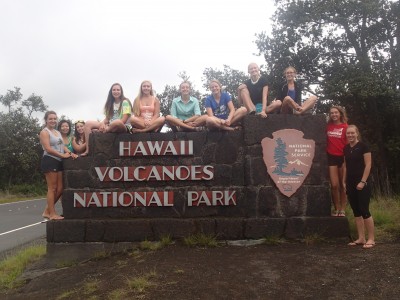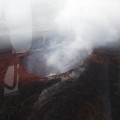NSU Newsroom
SharkBytes
Horizons
This version of NSU News has been archived as of February 28, 2019. To search through archived articles, visit nova.edu/search. To access the new version of NSU News, visit news.nova.edu.
This version of SharkBytes has been archived as of February 28, 2019. To search through archived articles, visit nova.edu/search. To access the new version of SharkBytes, visit sharkbytes.nova.edu.
NSU’s Halmos Students Witness Kilauea Volcano
This May, students from the Island Biogeography field course were able to witness the current eruption of the Kilauea volcano on the big Island of Hawaii. Since the students were not able to hike the Volcanoes National Park, they were surprised with a helicopter tour of this tectonic event. They were able to tour the East Rift and the Pu’u O’o Crater. This was the first time in a helicopter for almost all of them and were they thrilled!
Seeing the volcano was not all the students did on this trip. They cleaned a remote shoreline of debris and hiked to remote waterfalls. They also saw a green sea turtle foraging and drank fresh coconut water.
The Hawaiian Islands are the most distant island archipelago from any continental land mass on the planet. As such, it is a critical biological hotspot and more than half of all organisms are endemic to this island group. Natural and anthropogenic disturbances are common to island groups, all of which face extinctions of endemic flora and fauna, growing populations of invasive species, and increasing human resident and tourist populations. Students experienced firsthand the terrestrial and aquatics ecotomes of these oceanic islands and the island biogeographic principles.
- Hawaii
- Hawaii


